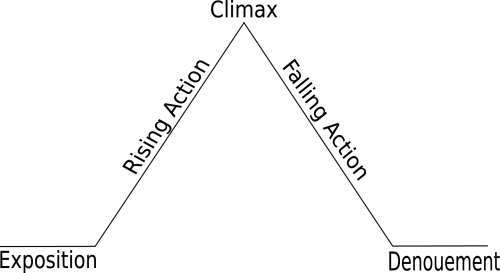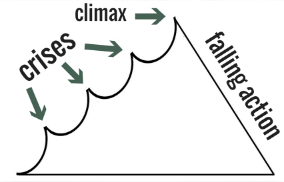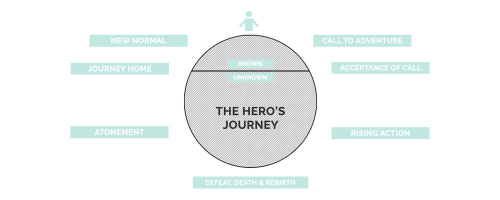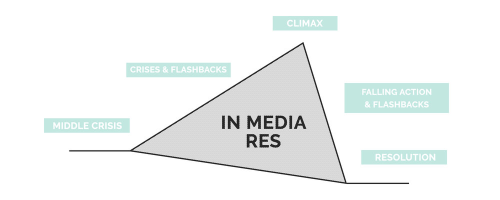1. Keep Up Do Date With The Class

Just a lil side note: i almost failed maths in grade 5-8. Now, I’m doing 2 Maths subjects (straight A+’s) and ranked the third highest in my class for the harder maths subject (out of 20 students). You can do anything if you set your mind to it. Be persistent. Happy studying! :)
1. Keep up do date with the class
Even if the teacher doesn’t set homework, there is always an expectation that whatever excercise isn’t finished in class, you do at home! My maths class moves very fast (we do about 3 concepts/excercises each class) and so its crucial that the first thing I do when I get home, is finish off my maths questions! This is particularly important in the learning process, because if you understand it when you learn it, you will be far ahead of anyone else in an upcoming test- all you will need to do is revise!
This means:
- don’t sit next to anyone distracting
- work efficiently in class
- the time that your waste in class, is the time you will have to spend at home
2. Do ALL the practice questions in your textbook
In my harder maths class, there are about 20 questions per excercise/concept (100+ per chapter) and so we might only get told to do about half of that. But, I strongly reccommend doing all of the questions! It is great practice and really consolidates your learning!
ALSO, as the questions go on, they tend to get harder. DON’T GIVE UP IF THEY’RE TOO HARD. Ask the teacher’s help, persevere, or look for a video on YouTube. These are the questions that will most likely be in your tests/exams.
If you can do the hardest question, you can most likely do all the questions!
If you get a question wrong, do AT LEAST 5 more of the same style, make sure you know it well!
3. Practice is everything
You cant really study for maths the same way that you might study for science. There is nothing to memorise (apart from formulas, but the best way to remember them is to practice). Studying for maths IS doing practice questions. That’s all there is to it.
- listen to some tunes (music with lyrics is fine for maths!)
- put on a movie ( just try to not get too distracted)
- find a comfy space
- just start studying.
4. How to study for maths when you’re sick of it all
Humans are creatures of habit. We like routines and we stick to them. BUT, studying maths can become tedious if you are constantly doing the same thing every time.
CHANGE IT UP Y'ALL:
- ditch the notebook and pencil. Buy some non-permanent glass markers and do some maths on your windows or mirrors! I do this ALL THE TIME! It’s actually really fun and it makes me feel like Russell Crowe from ‘A Beautiful Mind’ (haha). Alternatively, you could also use a whiteboard if you have one!
- study in the library or another part of your house!
- buy some different stationery (this is always so fun)
5. For an upcoming test…
do all the chapter review questions in your textbook. These tend to be a compilation of all the most important questions you will need to know. Take your time, don’t give up.
Seek external resources for questions. I own other revision books for maths that isn’t part of my school’s recommended material. These really help when you need more questions to test yourself on.
Do practice papers. THESE ARE CRUCIAL. Most of the time, the material that they test you on will be from past papers, the questions are the same, but they change the numbers!
Take a deep breath. Drink some water. Focus. Time management is the issue for most people (including me :)), so when you feel like a question is too challenging, move on, come back to it when you finish with a fresh mind!
More Posts from Wandererklary and Others
resource for procrastination
if you’re anything like me, working on a computer is a dangerous thing. i’ll get distracted by everything - that one email i should respond to, all the pictures of my dog, tumblr, and so on. I recently discovered an amazing resource to stop that.
it’s called writer’s block, and is free to download!
when you open it, it shows this screen, where you can choose either a time limit or word goal

then when you start, it opens a document that fills the entire screen like this

and you cannot quit the app or open anything else until your word/time quota is filled. i just wrote half of my english speech that i’ve been putting off all morning, and it took only 20 minutes!
so yup, it’s called writer’s block and is free for both mac and windows. enjoy!



Hello friends!
Studying for long important exams like the DAT (me (’: ), the MCAT, or even the SAT/ACT requires a lot of time budgeting! Today I was scheduling DAT studying for the next 20 days, and I realized that a progress percentage chart would be really useful for me because it would allow me to plan goals such as “finish a 1084-page review book” or “watch 46 chemistry videos from the video playlist” long-term! It’s hard to put long arduous tasks like these onto a daily or even weekly schedule - for me, they seem to work better when measured by %-finished.
I made this to use for myself this morning, and then realized that it might be useful for some of you out there, too! So I’ve uploaded it to google drive so you all can use it if it will be helpful in your studies. They come in blue, pink, yellow, and grayscale (for black-and-white printing): >>DOWNLOAD HERE<<
EDIT: I’ve gotten a suggestion from a very nice anon to make the background white so the printable does not use as much ink when printed in color! >>HERE<< is the link the white-background version on GDrive :)
To use this chart, I filled out specific goals on the left hand column and colored in the progress bar in the right in accordance with the percentage of the task or goal I had finished. I also marked dates next to the progress bar so I knew when I should have finished 50%, or 75%, or 100% of a task, etc. Here’s a pic of how I used it:
Keep reading
Introducing Language Printables

My boyfriend and I are trying to save up so we can rent a new place and get married, so we have been working hard on a new project: Japanese Learning Printables, which we’re selling on Etsy. He’s a professional graphic designer and I have been teaching languages since 2003, so we decided to put our professional skills together and design some products that we hope Japanese learners will find useful. Here’s a brief overview of what we’ve made so far: Language Study Printables Pack 1

This bundle contains eight different printables in PDF format, both in A4 and letter size. Colour and black and white versions are included.

There are New Kanji blank sheets for you to practice kanji, with spaces for mnemonics, stroke order, on’yomi and kun’yomi, example sentences and more. Language Exchange sheets allow you to document new vocabulary and phrases, as well as cultural points as you participate in language exchange, meaning you get more out of your experience and can review afterwards. There’s also space for feedback for your partner and goal tracking.

To increase productivity you can track your reading and study hours with these Reading Log and Study Log pages.

To keep track of new words or compounds you can use our New Vocabulary sheet, with space for readings, example sentences, so you can lean in context, and review tracking included. Learning in real-life context is particularly difficult for self-studiers, so with this in mind we designed this Grocery List printable, which you prepare at home, as you would a normal list, then take shopping so that you can use Japanese in context, even if you’re in a non-Japanese environment. Also included in the Language Study Printables Pack 1 are Anime Log and Drama Log trackers, where you can note down examples of words in context you encounter when watching Japanese TV, track where and when you heard them and monitor your reviews.

Beginners, Intermediate and Advanced Journal Prompt Printables There are three different levels available individually, or you can buy the bundle and get all three at a discount. Again the printables come in PDF format, including both A4 and letter size versions. Designed with self-studiers in mind, these packs cover basic to advanced Japanese, including topics on your interests, memories, goals, as well as your opinions on a variety of current events, cultural points and social issues. Each pack contains 31 unique language prompts, one for every day of the month.
Beginners Journal Prompts should be good for self-studiers who are at around JLPT N5/N4 level, or who are working through Genki I and II. Topics include writing about your environment and interests, whilst giving you opportunities to use beginner level grammar and vocabulary. An English translation cheat sheet is included to help you if you get lost.
Intermediate Journal Prompts would best suit those at about JLPT N3/N2, or working through a textbook like Tobira. Topics include writing for different purposes, talking about culture, re-telling anecdotes and expressing your opinions. An English translation cheat sheet is included to help you if you get lost.
Advanced Journal Prompts are designed for those at N2/N1 JLPT level, or beyond. They are written by a native Japanese speaker and are designed to help you create independent texts on engaging and relevant topics, whilst using advanced language skills such as persuasion, criticism, and expressing nuanced opinions that often appears at this level.

We really hope that you will take a look at LanguagePrintables on Etsy and favourite our store. We put a lot of thought into making these as useful as possible, and so we would very much appreciate your support through buying or simply reblogging this post. Thank you so much for taking the time to read this post, if you have any questions, please feel free to ask. If you have a request for a language learning printable you’d like to see on our store in the future, then please let us know!

Beauty must be appreciated. Cherish and admire the small things our earth gives. 😍
❤️❤️❤️my hero!!!

i’ve compiled a masterpost of tips that i have reblogged over the past few months and i thought it would be easier to have it all in one place. none of these posts are by me! huge thanks to everyone that has created these tips.
exams
finals: survival guide for the brave
pennyfynotes’ guide to exam season
study tips for exams
tips for doing well on exams
how to
how to accept and grow from failure
how to avoid education burnout
how to be an efficient test-taker
how to cope with exams
how to get straight a’s
how to get straight a’s 2
how to overcome failure
how to study effectively
how to study as a busy student
how to study when you don’t want to
how to utilise your studyblr
how to do well in a class taught by a crappy teacher
improve your handwriting
improve your life
productivity
5 easy productivity tips
7 productivity tips
productivity 101
the no bullshit guide to getting your shit together
school
4 tips for delivering a perfect presentation
a self care masterpost to help you get through school
school cheat sheet
back to school
back to school advice
habits of successful students
search google like a pro
useful things for those going back 2 school
study tips
6 things people don’t always tell you about studying
effective note taking
memory tips
my 3 steps in studying
memorisation tips for different types of learners
random study tips
study habits
study methods
study smarter
study tips
strategies for writing good conclusions
things not to do when studying
tips + tricks for learning a language
types of study breaks for every situation
unconventional study tips
when to use
work smarter, not harder
misc.
four rules for a disciplined life
self discipline tips
self soothing techniques
small gestures of self-love
tips on how to get up earlier if you aren’t a morning person

Hey guys! Since a lot of you are preparing to go to college or university over the summer, I thought I’d create a masterpost by gathering all the best resources I could find.
What to Bring & Dorm Room Advice:
Ultimate Packing List
What to Take to University 2018
Cheap & Easy Ways to Have the Best Dorm Room Ever
Make Your Dorm Room Feel Like Home
Moving Tips That Will Make Your Life So Much Easier
Getting Along with Your College Roommate
Fresher / Freshman Tips:
What You Need To Know Your First Month Of College
Preparing for Your First Year of College
Ultimate University Masterpost
How to Drink Safely
Cooking
22 Dorm-Friendly Recipes
Delicious and Cheap Snacks You Can Make in Your Dorm
11 Things We Wish We Had Known About Cooking in College
31 Foods You Should Learn To Make In College
How to Cook in College When You Actually Have a Kitchen
The 4 Best Cooking Blogs To Help You Survive College
Study Tips
How to Pull an All-Nighter Effectively and Still Do Well on Your Exam
How to Stop Procrastinating
Guide for University Learning
How to Get Motivated to Study
Limit Distractions
How to Make a Study Guide
Finances
Scholarship Database (US)
Scholarship Database (UK)
Student Discounts (UK)
More Student Discounts (UK)
25 Tips to Save Money at College
Tips to Lower the Cost of Food Shopping
Misc
Free Books
Free Textbooks
Hope you found this helpful, good luck if you’re starting this Autumn!
Follow my Instagram
🙃🙃🙃Something I need to remember!!! 🙃🙃🙃
Literally do your work as soon as you know it exists. If you get homework, do it during your free or when you get home or on the train if you really want to, on the day you get it. Just got set an assignment? Get the draft done that weekend. It doesn’t have to be amazing and absolutely ready to send in, it just needs to exist. Just got sent an email? Reply when you see it. If you’re not sure how to response to it, write Dear (), leave a gap and then write Regards () and keep that in your drafts. Set a reminder on your computer or write the reminder on a sticky note that you’ve got that sitting in your drafts and you need to send it off in the next 24 hours. Need to clean your room? Don’t spend time thinking or planning how you’re going to clean it or how you’re going to change up the space in the process, just pick stuff up and put it where it should be until everything’s in order. Done. Seriously dude, when a task arises as an issue, tackle it as soon as you realise it exists. Remember, it doesn’t need to be amazing it just needs to be done. So, when the due date of the task creeps closer, you can go back, work with what you have and make it the quality you want it to be.


Formula Sheet 2.0!
I’ve decided to revamp some of my old printables that I plan on using myself into a more simple look! :)
Comes in 2 versions: small lines and big lines
Box to write what class the printable is for
Column to write the name of the formula
Column to write the formula itself
Comes in landscape A4 and letter page size
Comes in PDF and JPEG file format
Rules & Information
Please do not steal, claim as your own, or redistribute; basic rules apply. Read more on my printable page
As a thank you to my followers, this printable doesn’t use AdFly :)
Download here!
My Printables Page & Tag | Formula Sheet 1.0 | Requests are always open!
How many types plot structures are there and how are they used?
Hiya! Thanks for your question! Plot structures are important for creating a good story.
There’s an infinite amount of plot structures depending on the story you’re telling. Some types are better than others within certain genres. Here are the most common plot structures, and how they’re used:
The Four Main Plot Structures:
Freytag’s Pyramid:

Also known as dramatic structure, this is the most simplistic of plot structures, and probably the one you were taught in elementary school. In this type of story structure, the climax falls in the middle, and the latter half of the story consists of falling action and the resolution. This was developed to analyze Greek and Shakespearian plays that use a five-act structure.
Why it’s good: It allows authors to explore the consequences of one’s actions. It’s also good for story analysis.
Why it’s bad: Long resolutions get boring fast. Modern novels don’t use this because no one wants to read a story where the villain is defeated in the middle.
When to use it: Children’s books and short stories
It’s good to use in children’s books because the goal of most children’s books is to teach kids a lesson. Using Freytag’s Pyramid gives writers the chance to teach kids the consequences of doing something wrong (lying, bullying, etc.). It works in short stories because the limited length prevents the denouement from being too long and boring the reader.
Examples: Any of Shakespeare’s plays
The Fichtean Curve:

This is what most modern novels use, no matter the genre. The Fichtean Curve features a varying number of crises (or mini-climaxes) within the rising action to build up to climax about two-thirds of the way through the story. The falling action is short and used to wrap up loose ends or establish a new way of life for the characters.
Why it’s good: Putting crises throughout the story will keep readers hooked until the end. It also helps to keep good pacing. Despite being frequently used, this structure is loose enough that anyone can use it and make it unique for their own story.
Why it’s bad: Too much action can be overwhelming. This structure also doesn’t work well with certain story types such as Voyage and Return, Rebirth, or Comedy.
When to use it: Action-packed stories, Overcoming the Monster plots, or Quest plots
Examples: Night Circus by Erin Morgenstern, World War Z by Max Brooks, or Red Queen by Victoria Aveyard
The Hero’s Journey:

Another common plot structure that is seen in modern novels (especially western literature), and can be combined with the Fichtean Curve. Often, modern novels are a combination of the two. What makes the Hero’s Journey unique is that the protagonist must go through a literal or figurative death that completely transforms them. The death is usually, but not always, the climax of the story. Another key difference in The Hero’s Journey is that the protagonist must atone for their past rather than overcome it or move on without going back.
Why it’s good: Allows for great character development in character-strong stories.
Why it’s bad: Nearly every western novel, film, or TV show (successful and unsuccessful) uses this plot structure. It’s a little overdone, but if you can put a good personal twist on it, it can work out just fine.
When to use it: First-person stories, stories with small casts, Voyage and Return plots, or Rebirth plots
Examples: To Kill a Mockingbird by Harper Lee, The Lightning Thief by Rick Riordan, or Divergent by Veronica Roth
In Media Res

Latin for “in the middle of things”, In Media Res is a unique plot structure. Rather than start with an exposition that builds up to the action, In Media Res starts right in the middle of the story. If you were to start your story at the second or third crisis point of the Fichtean Curve, you would get In Media Res.
Why It’s Good: Dropping people in the middle of the action will hook the right from the beginning.
Why It’s Bad: Starting with the action can be disorienting for readers. Make sure you fill in the backstory as the plot moves on.
When to Use It: Stories with small casts, Crime plots, or Mystery plots
Examples: Hatchet by Gary Paulsen, The Lord of the Flies by William Golding, or The Iliad by Homer
There are plenty more plot structures, but these are the main four, and all others are based off these in some way. Keep in mind that most stories use a combination of these plot structures, so you don’t have to stick to just one.
Thanks again for your question! If you need help with anything else writing related, feel free to send in another ask. Happy writing!
- Mod Kellie
If you need advice on general writing or fanfiction, you should maybe ask us!
-
 prefoncoxoco liked this · 1 year ago
prefoncoxoco liked this · 1 year ago -
 reminiscentdaydream liked this · 2 years ago
reminiscentdaydream liked this · 2 years ago -
 reminiscentdaydream reblogged this · 2 years ago
reminiscentdaydream reblogged this · 2 years ago -
 studyingfluff reblogged this · 2 years ago
studyingfluff reblogged this · 2 years ago -
 19tmblwd31 liked this · 2 years ago
19tmblwd31 liked this · 2 years ago
